Strains Merchadisimg Expeditions Catalog
The Strain Hunters strain catalog has always been printed on glossy, magazine-like paper. It has high-resolution photos: buds and leaves under a microscope, harvest, all in an expensive black-and-gold style. Every page is shiny and wrinkle-free. Fans of the seed bank still keep the catalogs prominently displayed. Especially the early versions from the 2008 — 2009, with photos from expeditions, are popular.

The catalog cover looks like a promotional artifact, a classic promotional piece from their early years. It highlighting rare landraces and premium hybrids. The design is pure treasure hunter vibe. A worn world map in dark tones filled with gold and white stamps. The logo with the inscription «The Landrace Quality Guaranteed» promises authenticit. Their specialty is preserving rare landraces from wild regions are obious.
The website strainhunters.com is still up and running, offering tonns of info and form to order seeds. The cover is clearly part of their merch campaign—collectors treasure such things as mementos!
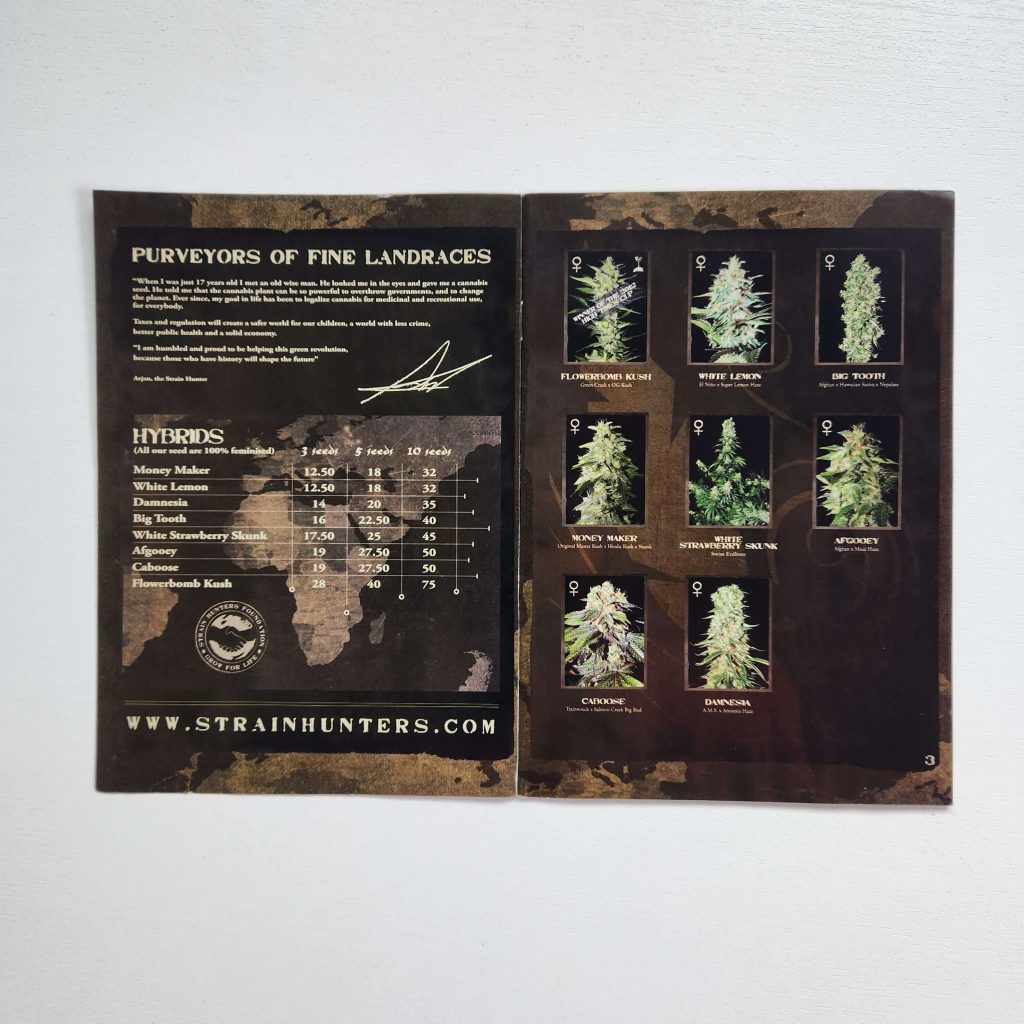
Next spread design is a treasure-hunting style— world map, a photos of buds and Arjan’s caption. He describes his passion for cannabis and his mission to preserve genetics for the future.The spread is divided into two sections: one focuses on landraces, pure, authentic strains from various region. And the other page focused on hybrids. These pure strains collected during expeditions. Pictured four potted plants with male flowers, emphasize authenticity and rarity.
Afghan Kush OG. A classic indica landrace from Afghanistan. A powerful, relaxing effect, dense buds with a hashish aroma. Harvested during adventurous trips through the Hindu Kush.
White Lemon. A sativa from Lebanon, with a white coating and citrus notes. Energizing yet calming – perfect for daytime use.
Big Tooth: An Afghani-Pakistani landrace, known for its large leaves and serrated edges (hence the name). High yields, earthy flavor.
These landraces are the foundation of the seedbank. They are saved from extinction so that growers could revive pure genetics without hybridization. These strains are not just seeds, but «pieces of history». Many are based on seeds from expeditions, such as Afghan or Malawian landraces. For growers, they mean a lot – consistent yields, pure genetics, and a contribution to the preservation of the biosphere.
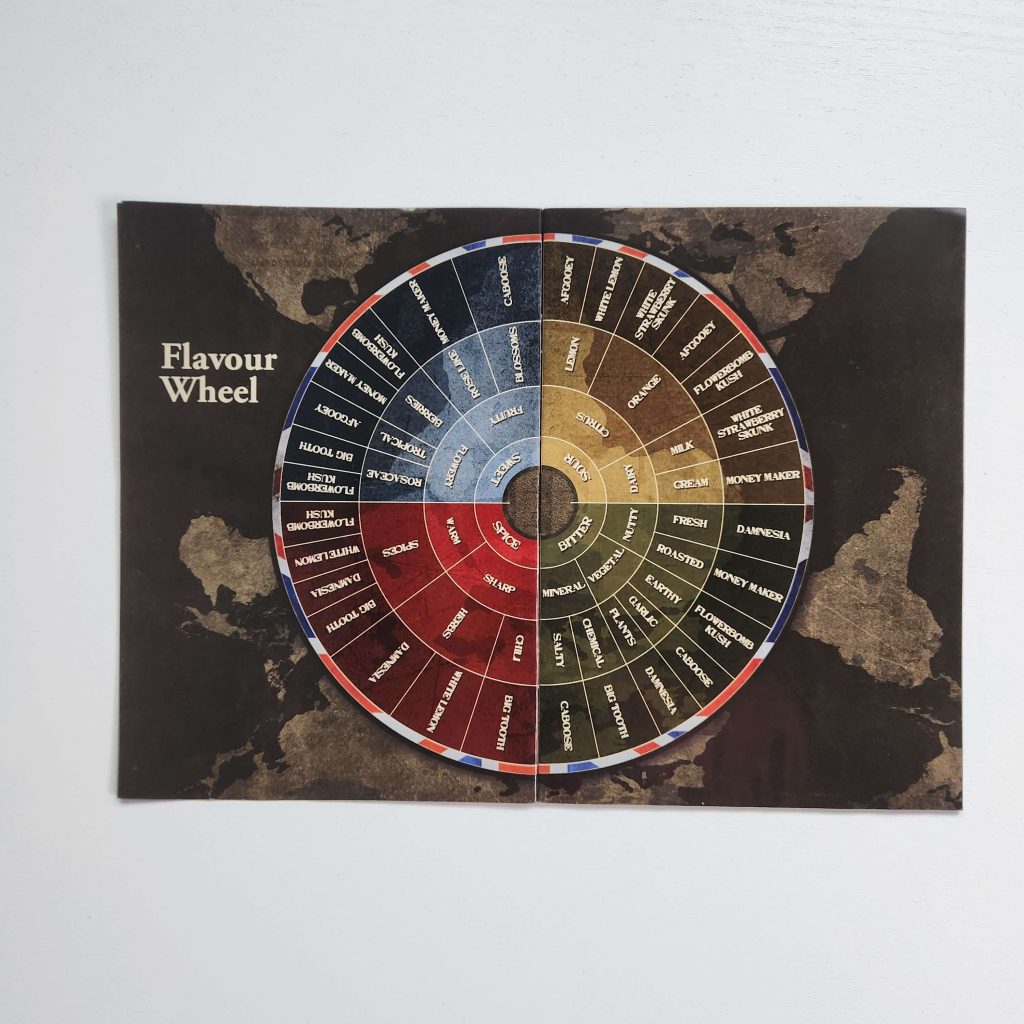
«Flavor Wheel» made by Strain Hunters, is a mini-encyclopedia of their strains’ flavors. Designed in the style of their signature cards. The wheel is divided into color-coded segments. Colours ranging from red (spicy) to green (earthy) and blue (citrus). Wheel feature strains like Money Maker, Flowerbomb Kush, and Damnesia. Each segment is associated with basic flavors. «Fresh,» «Roasted,» «Citrus,» «Spicy,» and even «Chemical,» reflecting their approach to preserving authentic profiles.
Strains like White Lemon and Strawberry Skunk fall into the citrusy-berry zone. Afghan Kush and Big Tooth lean toward earthy and hashy notes. This isn’t just a list. It’s a tool for growers to understand what awaits in each strain. Honestly, pure piece of art!!!


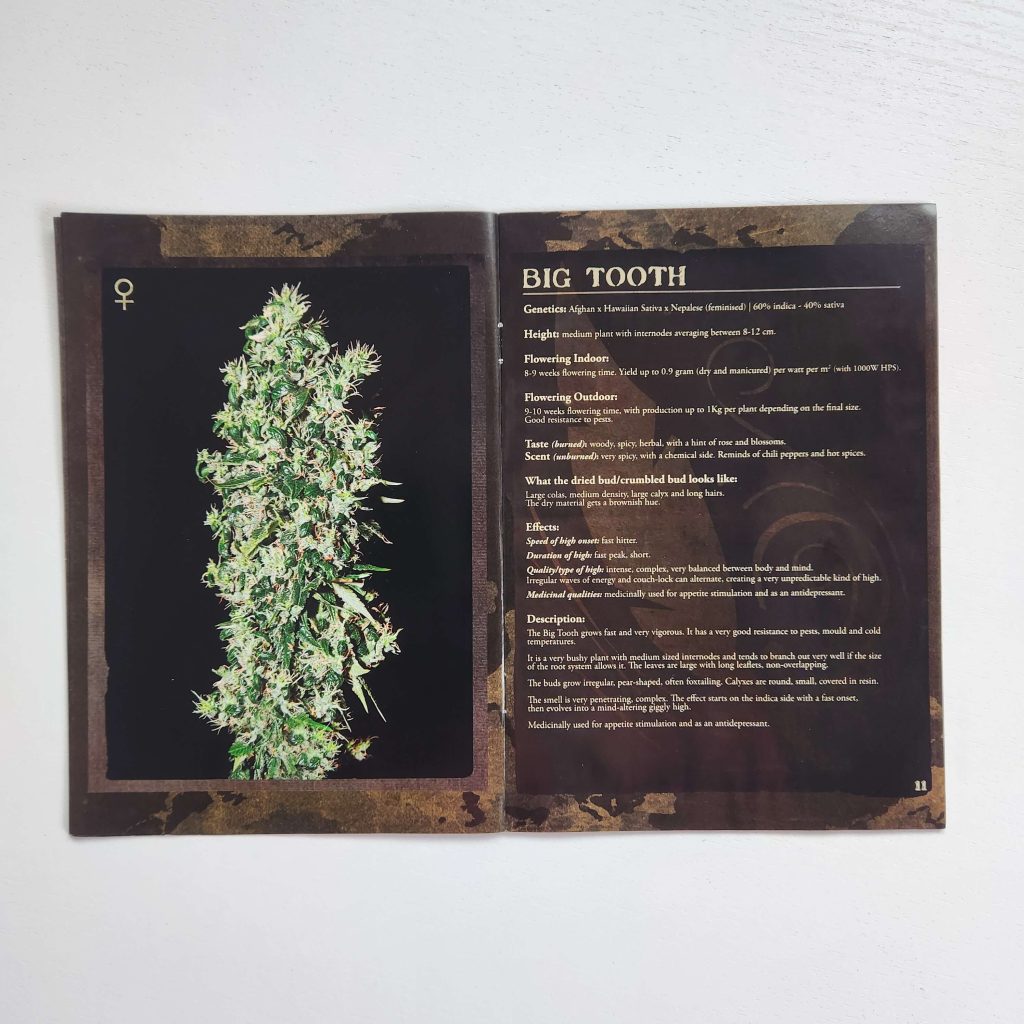
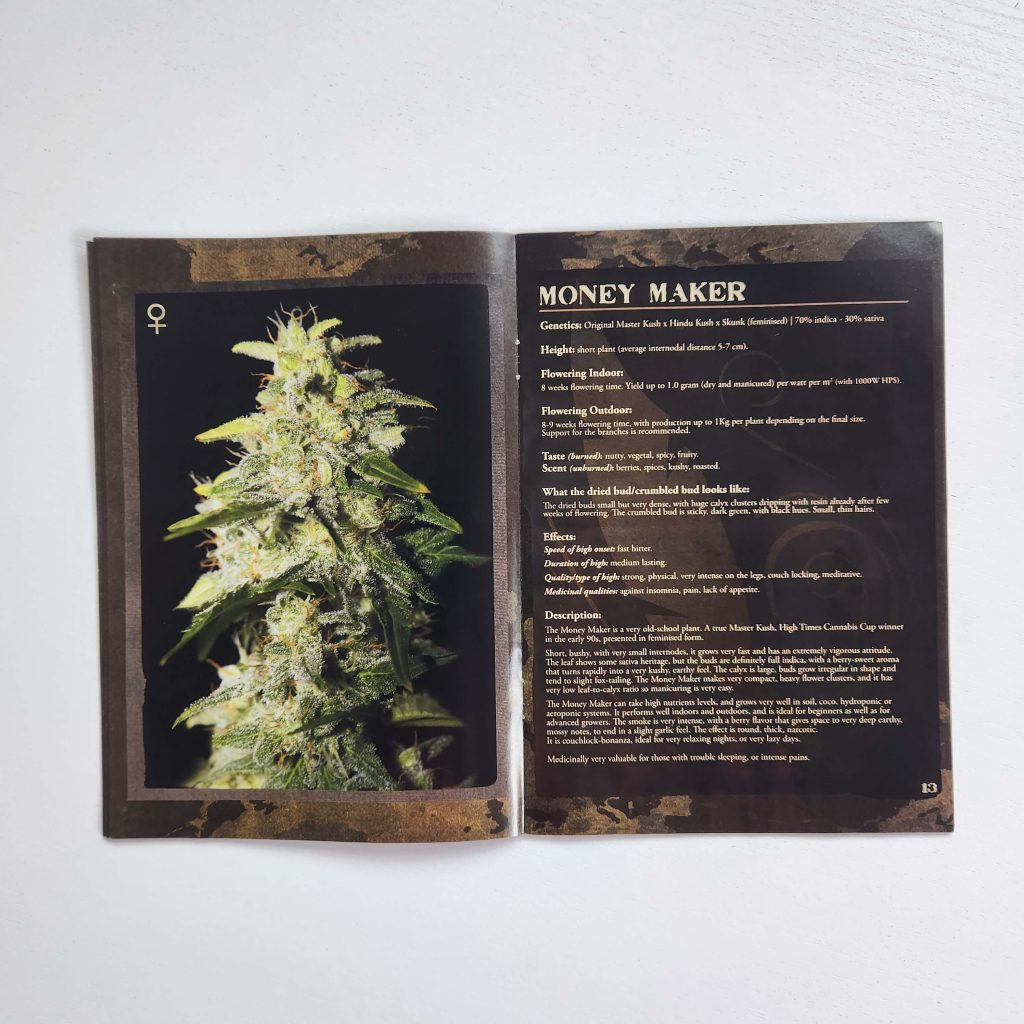
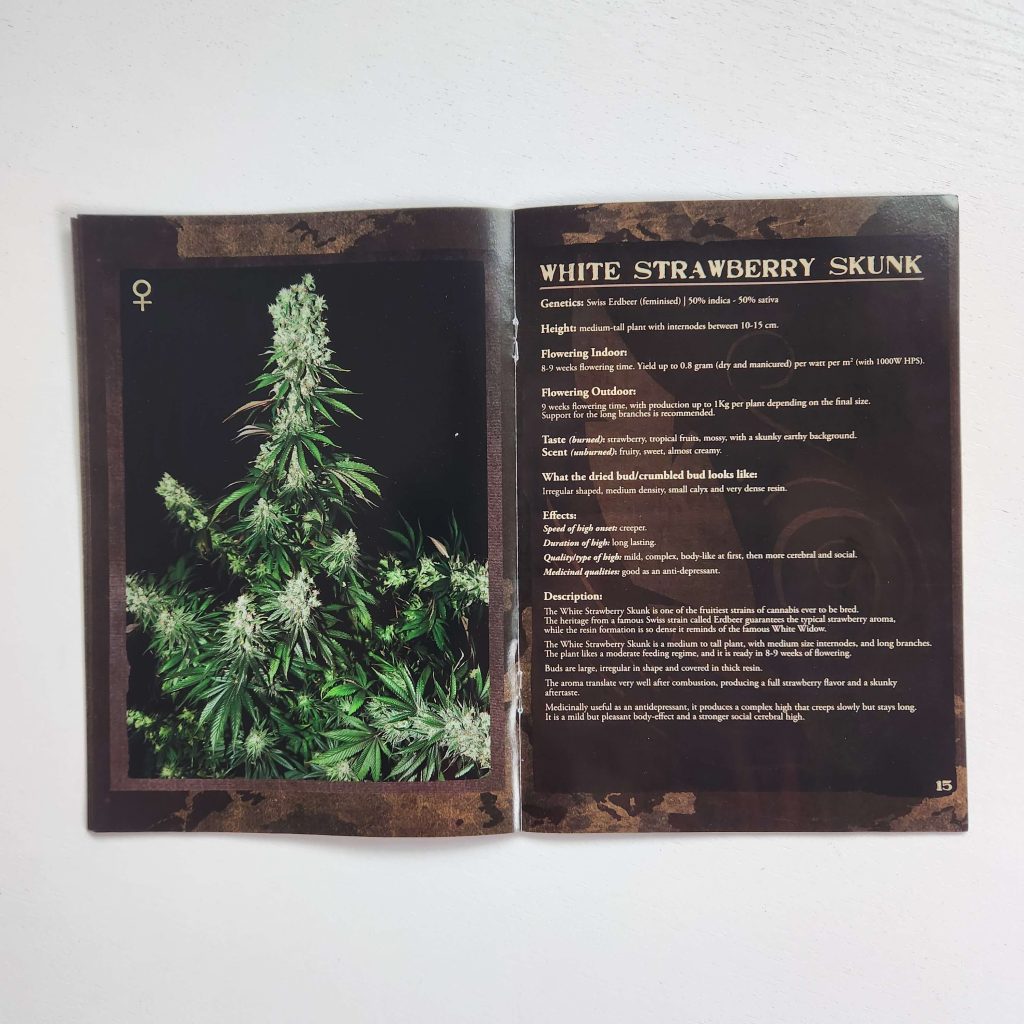
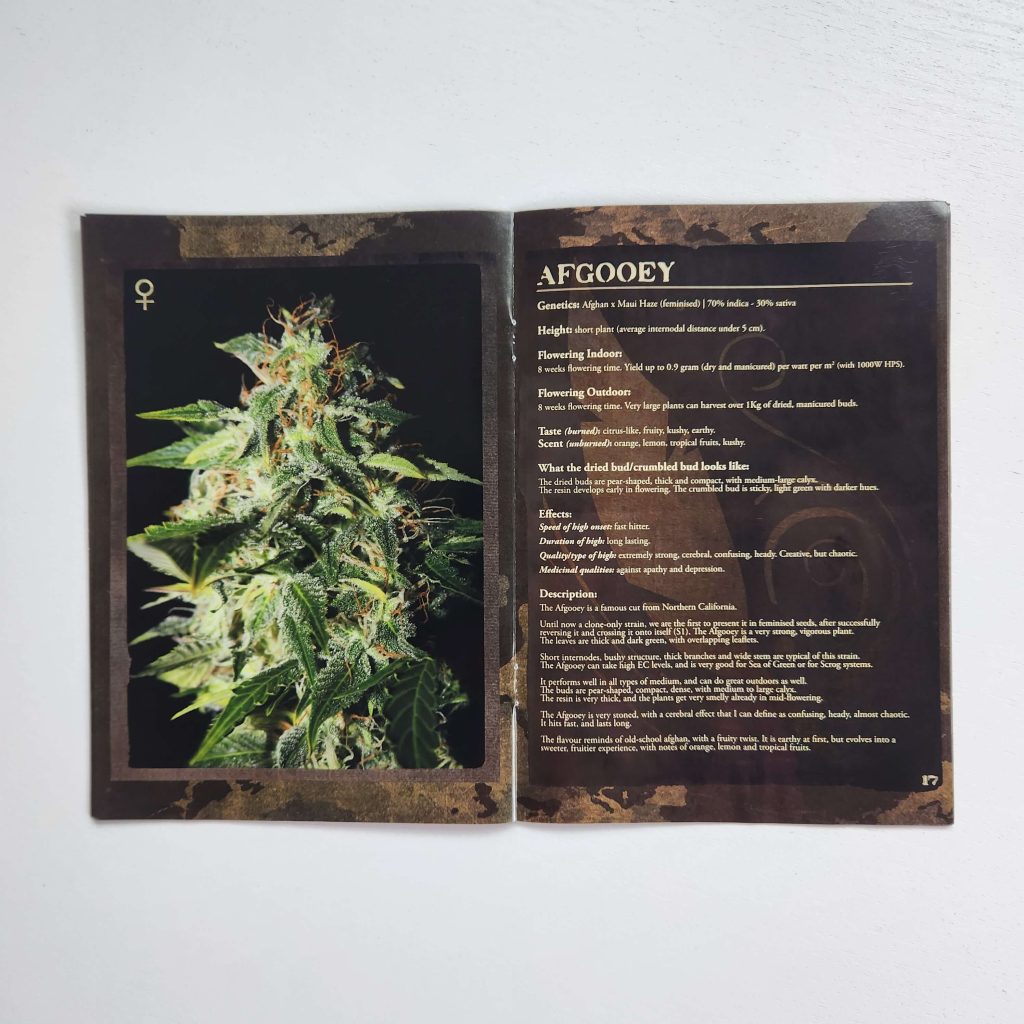

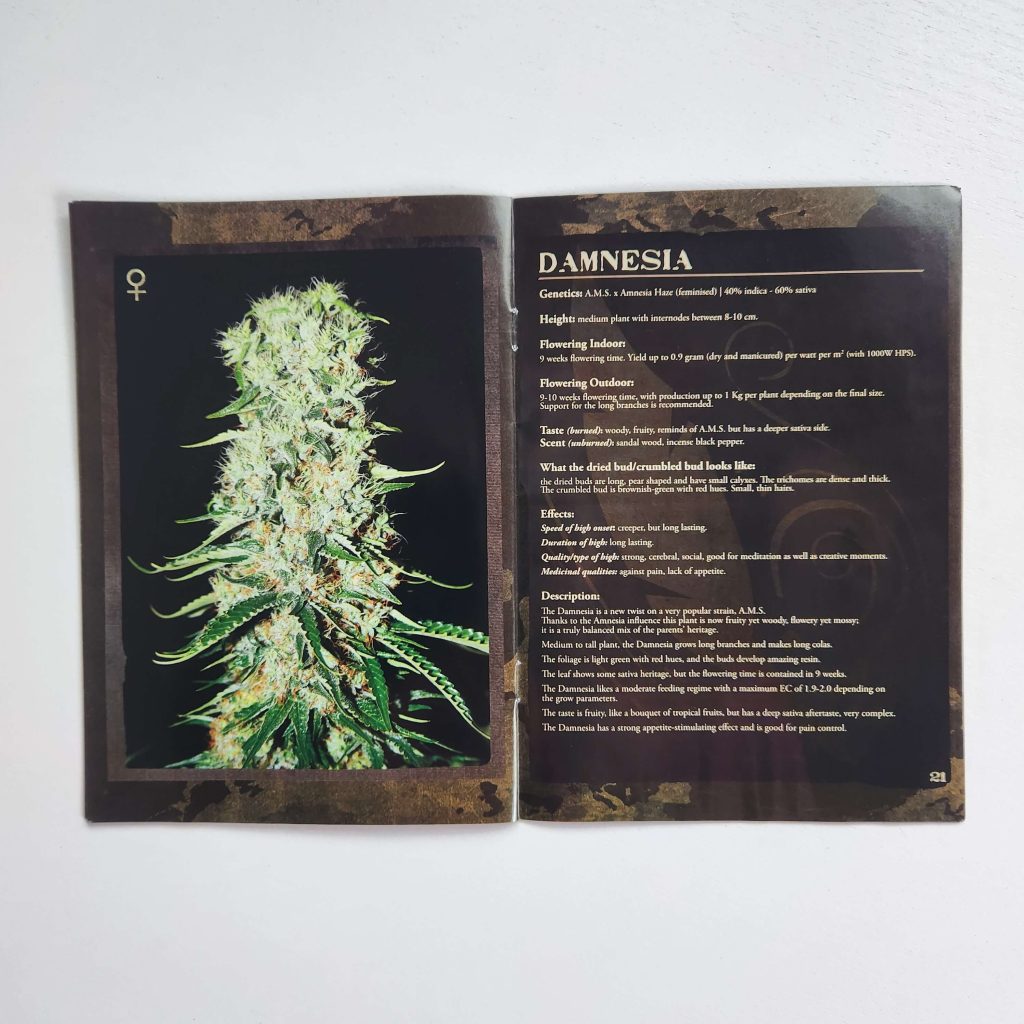
The remaining pages present all the varieties available in the catalog at that time. Design is simple: a huge bud and detailed strain description.

The left page is dedicated to first expedition to Africa and second to India. The left page, Malawi, tells how guys smuggled seeds, risking arrest.
The right page is India, their second expedition (2008). The text recounts how, they did find charas, the legendary Himalayan hash. Team took risks at altitude and skirted local laws, but brought back seeds with unique phenotypes. This was a turning point—since then, hunt for strains has gone global.
These pages aren’t just promotional material. Real a history of Strain Hunters work. Trips where they filmed for films and saved genetics.

Check an another epic piece of adventures! The pages tells of expeditions to Morocco and Trinidad with St. Vincent. The design style is the same: a dark background, vibrant photos of the team in action.
The left page is Morocco, the third expedition (2010). Photo shows the guys in the Rif Mountains, collecting seeds. A jeep against a backdrop of hills, local farmers with horses. The text describes the search for the best landraces in Northern Morocco. Up there cannabis is a common and important part of the local lifestyle. The guys studied the mountaineers’ survival rhythms, farming methods, and brought back seeds. The risk was real—smuggling and violations of local laws are evident, but the result was worth the effort.
The right page is the Caribbean, the fourth expedition. The text recounts how they researched cannabis on these islands. Located just a hundred kilometers apart they have distinct cultures. Trinidad is famous because of its reggae vibe and St. Vincent with its unique landraces. The documentary showed the contrast: from a relaxed style to challenging conditions, and the seeds they brought back became the basis for new strains. These pages serve as a guide to their mission: risk, culture, genetics.
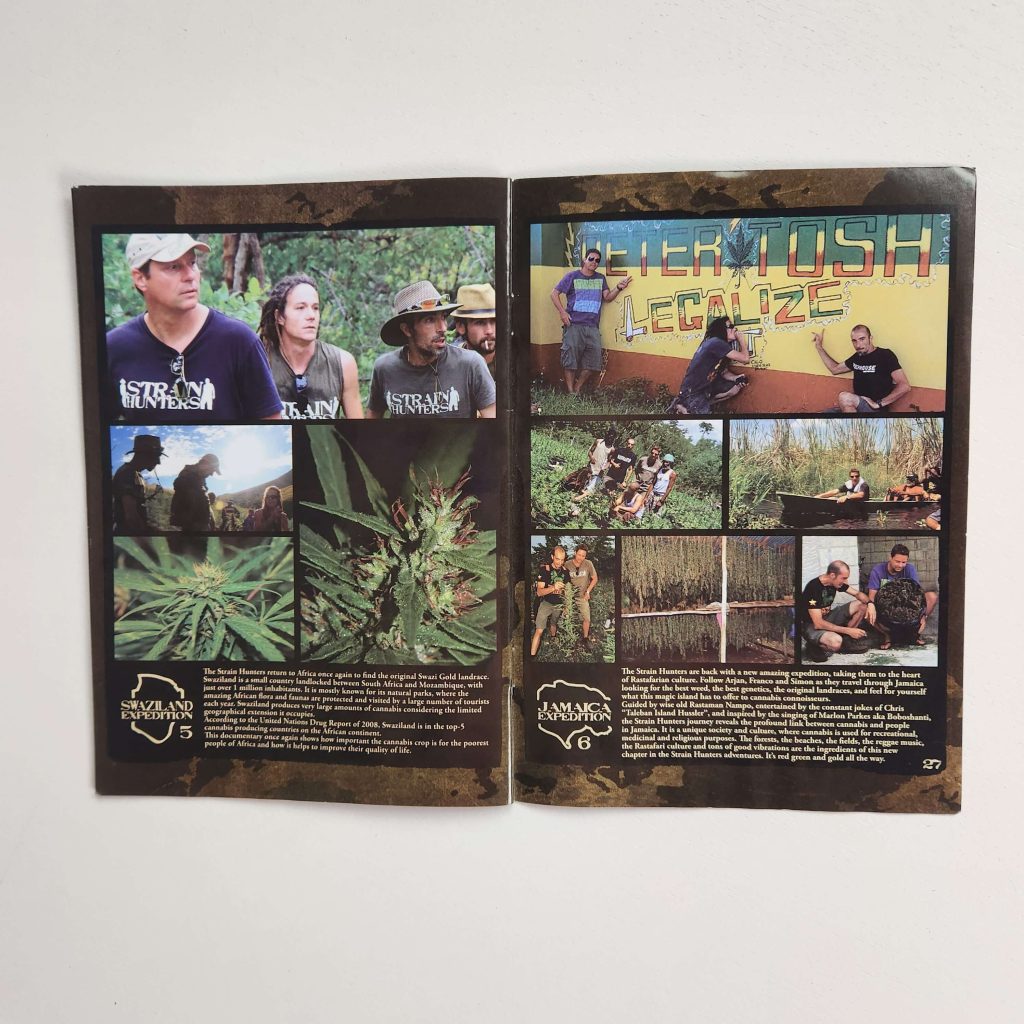
Expeditions to Swaziland and Jamaica are pictured on those pages. Swaziland was their fifth expedition. All team returned to Africa to retrieve the original Swazi Gold. This rare landrace cannabis is priceless. Swaziland is known for its national parks, and cannabis is a means of survival for the poor there. They studied cultivation and, as usual, risked arrest to bring seeds to Holland for breeding.
Jamaica, their sixth expedition, where reggae culture and cannabis rituals comes together. They explored landrace cannabis, inspired by Jamaica as the birthplace of Rastafari. The film shows the island’s contrasts, from mountains to beaches. It was the culmination of their Caribbean adventures.
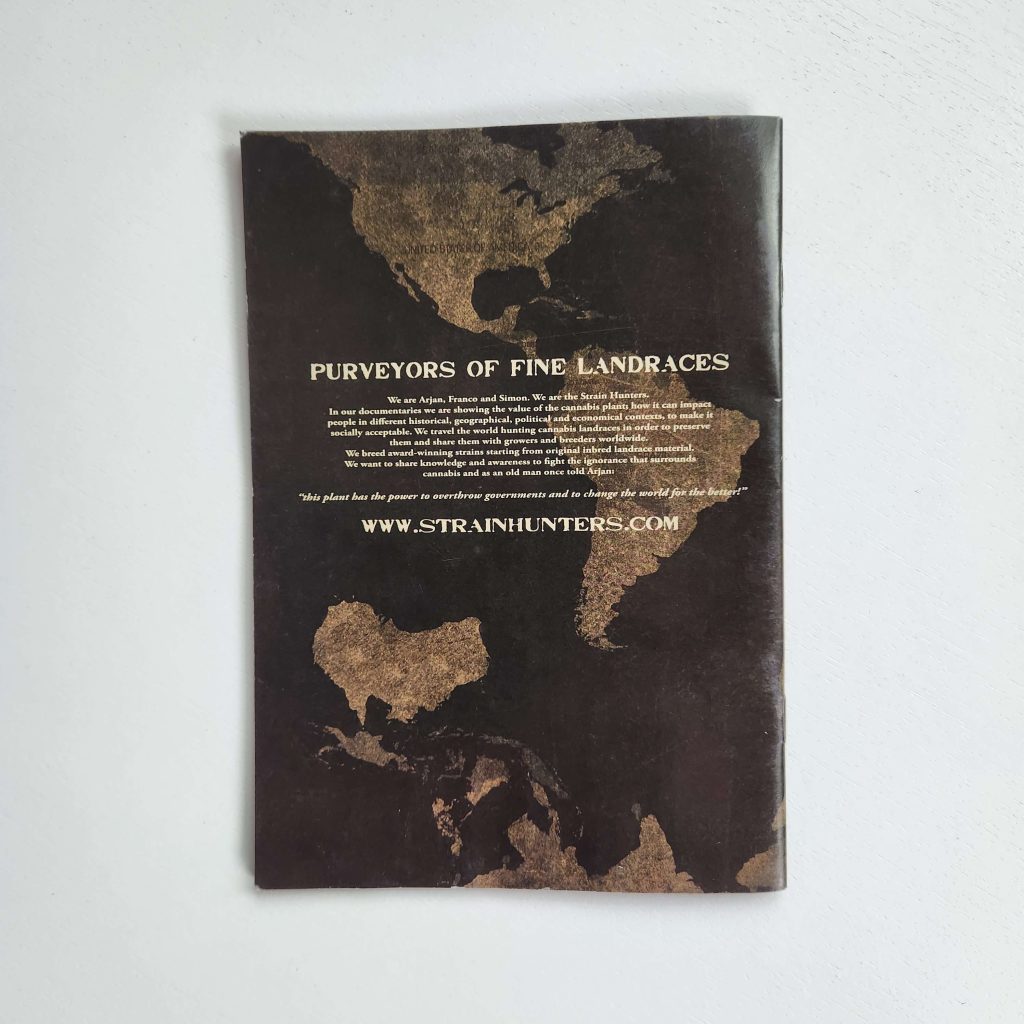
The back cover is like a mission statement for Strain Hunters! Against a dark background with a worn world map, in the style of their signature design, the inscription «Purveyors of Fine Landraces» stands out—their pride in preserving rare landraces. The text by Arjan and Franco explores how cannabis impacts people, culture, and even governments through documentaries. They emphasize their role: collecting seeds from around the world, working with locals, and sharing knowledge with breeders. The quote «This plant has the power to overthrow governments and change the world for the better» is their challenge to the system. The website www.strainhunters.com is listed as the center of their work. This is not just a cover, but a symbol of their fight for cannabis biodiversity.